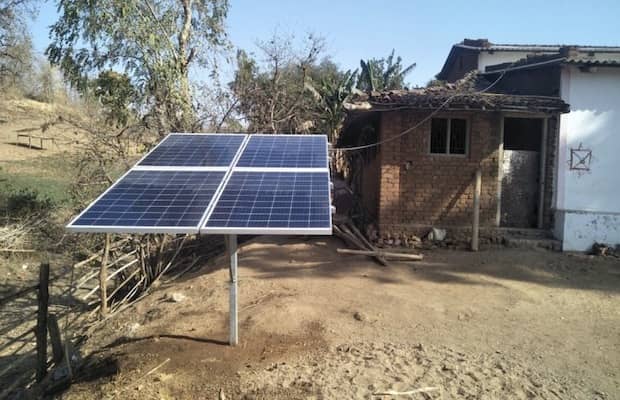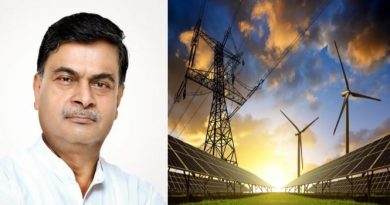India’s Indifference to Mini-Grids Throttling A big Job opportunity

Last year, India celebrated power connectivity to every household in the country, or to be more precise, power access. This was definitely a huge achievement, marking a massive improvement in both access and quality of power that has been witnessed in the past few years.
And it has taken a huge effort to get there too. Achieved through the Pradhan Mantri Sahaj Bijli har Ghar Yojna, or Saubhagya scheme, a total of Rs 16, 320 crores had been earmarked to ensure that the final batch of 2.48 crore households got connected. Under the scheme, free electricity connections were provided to below poverty line (BPL) households, while other households had to pay ₹500 for the connection. This amount was to be recovered by the power distribution company in 10 instalments along with the electricity bills. With the 10 instalments period presumably over, it is interesting to note that data is still not available on recovery rates of these instalments, even as discom losses have moved up.
Importantly, challenges of both quality and affordability remain. Quality because, in hard to reach areas, maintaining connectivity is also a high ongoing cost, while affordability clearly matters at a time when loss making discoms and cash strapped state governments can no longer continue subsidising these new entrants to the power network. Thus, while connected, accessible areas have reported a clear improvement in power supply, notably higher availability, the less accessible areas have continued to struggle, especially with breakdowns taking longer to fix.
All this puts the focus back on the role of mini-grids, or should. Mini-grids have struggled to make headway in India for a reason. And that reason was cost. With power supply costs that were multiple times those of power pricing on the main grid, the government felt obligated to ensure main grid access for all, to cover for any charges of unfairness. However, in doing so, it might have overlooked many other positives when it comes to mini-grids.
For one, as a local generator of power, both generation and supply can be predicted more effectively with mini-grids. Costs too, have come down significantly, especially the biggest bugbear, storage costs. Finally, and perhaps the clinching argument. Mini-grids have the potential to create many more jobs as compared to grid power, with some reputed estimates placing a figure of almost 133 jobs for every MW of mini-grid capacity. While many of these jobs come and go during the installation phase, mini-grids do create many more opportunities in operations and maintainance, besides collections.
Even in terms of actual power supply lets look at what Saubhagya actually considers a success. The scheme envisages electricity connection for each household by drawing a service cable from the nearest electricity pole to the home, installing an energy meter, and wiring for a single light point with an LED bulb and a mobile charging point. That’s the sort of power demand and supply mini-grids are best equipped to handle, including their typical flat monthly pricing models, where piloted in India. Thus, imagine billing from the central grid, for say, 8 hours of power supply daily, where the monthly unit consumption would be barely 10 units. And contrast that with the much higher dependability and duration of mini grid supply, with a monthly billing of Rs say, Rs 100-Rs 150 collected by a local agent. With the right incentives, there is no doubt what will win the user vote here.
Interestingly, if one takes into account the cost of last mile connectivity in remote areas, and the price paid to maintain it, the gap between mini-grids and central grid power might narrow considerably, and in some cases, even disappear.
Nigeria, Africa’s biggest economy by nominal GDP, offers a good pointer to the future. The country has mini-grids a critical part of their power access plans. According to a report from Power For All, with World Bank support, Nigeria plans 1,200 mini-grid sites, with a potential of scaling up to 10,000 sites by 2030 to meet its own power for all objectives. This ramp up in mini-grid capacity is expected to create a fresh impetus to jobs in the sector. Operating 405 MW worth of mini-grids would take roughly 50,000 highly skilled employees every year, as more than 83% of mini-grid employees are skilled. Their study also projects 9,500 informal jobs would be required to satisfy 405 MW of capacity.
A study by JMK research in India, which has looked at storage costs, also has some interesting findings. They estimate that tariff of electricity from solar+storage would range between Rs 6.6 per unit and Rs 9 per unit. The assumption here is for a 4 hour battery storage backup, with assumptions including a depreciation rate of 3.6 per cent for 25 years of solar and 9 percent for the battery for first battery life, followed by 6 per cent for second battery life . These are both reasonable financial assumptions, and only mirror what is being promised by suppliers today.
So it there a case for the government relooking power subsidy allocations towards mini-grids in a big way? We believe it should. Consider the fact that despite the huge additions to the grid, actual impact in power consumption has barely budged, the clearest signal yet that decentralisation of power is the way forward, not more centralisation. Government schemes pushing solar water pumps for instance, do have a mini-grid component to them, where they expect farmers to supply power back to the grid too and get paid for it. But current power economics have stunted performance there too, putting the onus firmly back on considering mini-grids for local sale and consumption.




